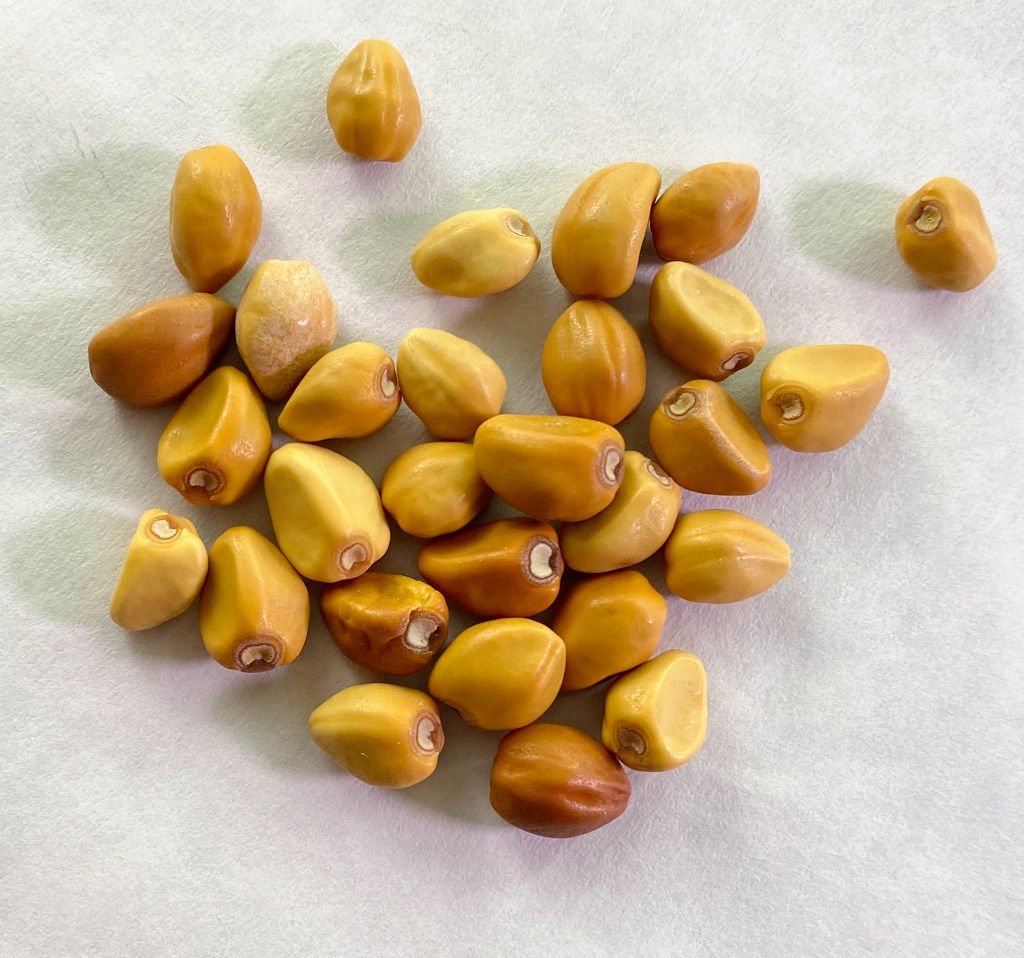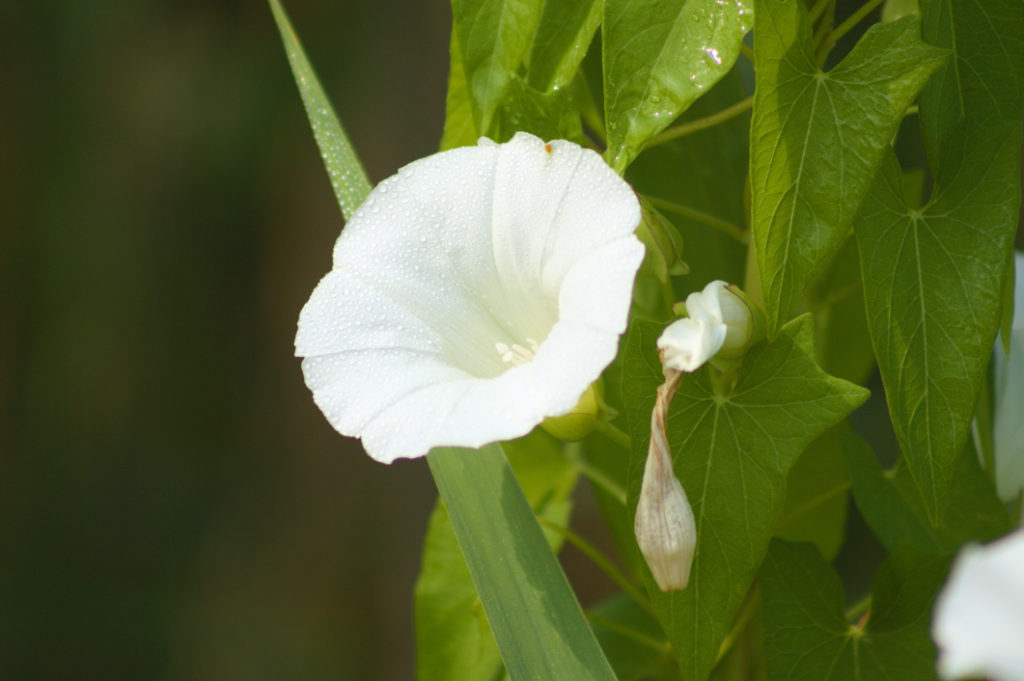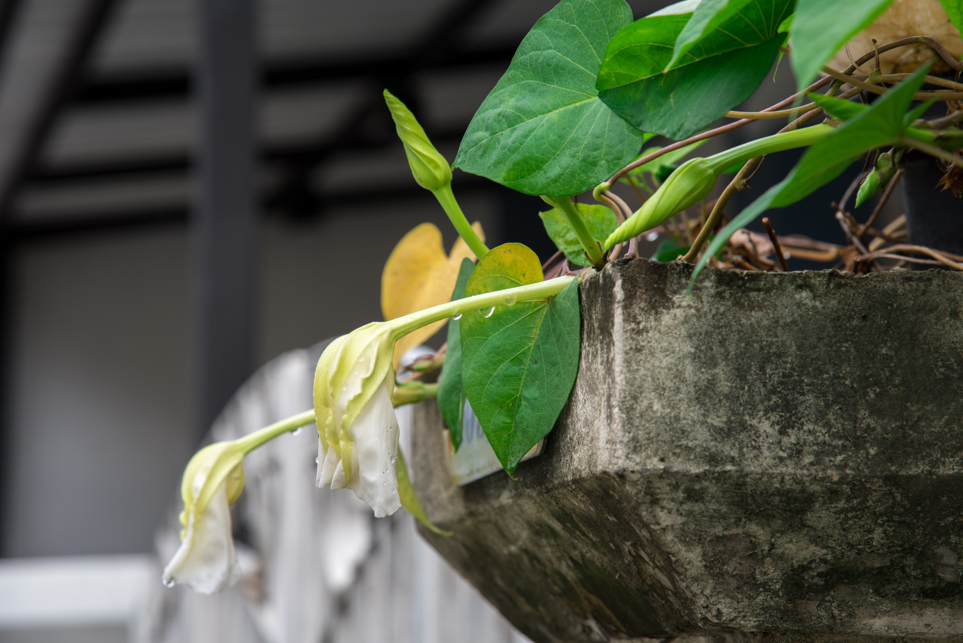Grow Ipomoea Alba ‘Moonflower Vine’ For Breathtaking Flowers In The Evening

Chris is a gardening writer and nature enthusiast. He graduated from Oxford Brookes University in 2022 with an MA in Psychology. Chris works with the Leeds Green Action Society, helping their food cooperative by growing various fruit and vegetables on their two allotments in Hyde Park, Leeds.
Reviewed By COLIN SKELLY

Colin is a Horticulturist and Horticultural Consultant with experience in a range of practical and managerial roles across heritage, commercial and public horticulture. He holds the Royal Horticultural Society’s Master of Horticulture award and has a particular interest in horticultural ecology and naturalistic planting for habitat and climate resilience.
IN THIS GUIDE
IPOMOEA GUIDES
Moonflower
There are two plants that go by the name moonflower, so let’s make sure you’re reading about the right one.
The Ipomoea alba is a wild-growing vine and can grow to enormous heights.
Its flowers open at dusk, bloom in the night, and then die in the morning to be replaced again the next afternoon.

The other plant, Datura innoxia, grows to a smaller height and its flowers don’t die each day.
In this article, we will be focusing on the first: the moonflower vine.
Overview
| Botanical Name | Ipomoea alba |
| Common Name(s) | Moonflower / belle de nuit |
| Plant Type | Annual Climber |
| Native Area | North & South America and the Caribbean |
| Hardiness Rating | H5 |
| Foliage | Evergreen |
| Flowers | Coiled white petals that unfurl to reveal white circular shape |
| When To Plant | All year round (when cultivated indoors) |
| When To Prune | September-February |
Sunlight
Preferred
Full Sun or Partial Shade
Exposure
Sheltered
Size
Height
Up to 3M
Spread
0.5 – 1.5M
Bloom Time
Summer
Soil
Preferred
Chalk, sand or loam
Moisture
Well-drained
pH
Any
One of the joys of gardening is selecting flowers that work well together in terms of colour, bloom time, and other factors to create lasting variety and visual interest.
You can liven up a medley of colour by putting it against a backdrop of white, for example; or pick a few plants that flower in winter to extend your season interest.
You can also look for plants that flower at different times of day, with the moonflower vine, I. alba, being a fine example of a flower whose bloom is most breathtaking in the evening and through the night.
This plant makes a great addition to gardens that play host to evening gatherings, whether they be barbecues or bonfires.
As a native to more tropical climes, the moonflower vine does grow best in warm temperatures, but British gardeners are able to get good results by growing it as an annual.
“Ipomoea alba is a perennial in its native tropical Americas but a warm season annual in the UK (it dies off because of winter cold not because of its life cycle),” says Horticultural Consultant Colin Skelly.
“I love trying to grow plants from warmer regions in the UK. In a long, hot summer you can get great results.
“It can be challenging if the summer is unsettled by colder and wetter weather but that makes the joy when it comes off even more euphoric!”
Growing From Seed
Growing moonflower vines from seed is possible, and in British conditions, it’s recommended you plant them between 6-8 weeks ahead of outdoor planting.
You can plant outdoors when temperatures are consistently over 15°C, so aim to sow in late March to early April to plant in late May or early June.
Scratch the exterior of the seed with a knife or sandpaper, taking care to not damage the inside.

Soak the seed for a couple of hours in warm water.
Once the seed swells, plant it between 5-7mm below the surface of moist but well-drained seed compost.
To propagate, these seeds need temperatures between 20-25°C.
It can take anywhere from 5-45 days for propagation, although the lower end of this range is most likely.
Move to a pot once the seedlings are established and make sure it’s big enough to accommodate their growth.
If you’re growing outside, wait until the last frost has passed and remember what we said about temperatures being consistently over 15°C.
Alternatively you can grow in a conservatory or greenhouse.
Is It Invasive?
This plant is considered invasive in some more tropical regions.
In the UK it can be borderline invasive, so make sure to keep an eye on how far your plant is spreading.
Ipomoea Alba Care
Once your moonflower is established, it’s a fairly undemanding plant.

It’s always good to know how to keep your plants in tip-top condition though, so here are some Ipomoea alba care guidelines to help you out.
Light
It’ll be happy growing in full sun or partial shade, but as a general rule more sun increases the number of blooms you’ll get from a mature moonflower.
Temperature & Humidity
Being native to warmer regions of North America, South America and the Caribbean, this plant is built to thrive in higher temperatures.1Rojas-Sandoval, J. (2022). Ipomoea alba (white moonflower ). CABI Compendium, CABI Compendium. https://doi.org/10.1079/cabicompendium.119823

Growers in warm climates will be treated to a perennial growth habit, whereas British gardeners are most likely to have an annual moonflower.
An outdoor temperature above 15°C is most conducive to a healthy plant.
Preferred Soil & Drainage
Go for moist, well-drained soil for best results.
Chalk, sand or loam soils should be suitable for a moonflower, with seed compost for germination.
Watering
Water regularly when plants are young and keep your moonflower hydrated as it grows.

This plant can grow to impressive heights and so requires plenty of water to satiate its thirst!
Feeding
A high phosphorus fertiliser will correlate with a more luscious floral bloom, whereas high nitrogen fertiliser may reduce the number of flowers – instead stimulating the growth of more foliage.
Check the instructions for the fertiliser to see whether it needs diluting.
Pruning
As an annual, you can prune this plant back after the flowering season to give space for next year’s plant to grow.
Bear in mind, however, that I. alba puts forth attractive and intriguing seed pods after flowering, and some gardeners decide to keep these plants around a little longer so they can enjoy these seeds.
As an enthusiastic grower, you may find yourself wanting to trim back your moonflower vine throughout its flowering season to keep it looking tidy and organised.
This is fine, just be careful not to prune back too aggressively.
Common Issues
Moonflowers aren’t known to be particularly prone to any diseases, meaning they should give you a fairly low amount of hassle.
There are a few insects to keep an eye out for, however, including aphids, spider mites and leaf beetles.

Here’s how to reduce the risk of an infestation:
- Be vigilant: inspect the leaves of your moonflower vine every once in a while to make sure there are no insects visible, or any telltale signs of their presence (eg. holes in leaves, residue on their underside, or even eggs).
- Keep an eye on surrounding plants: pests are liable to make the jump between plants that live close together, so if a neighbouring plant is playing host to some pests, be extra vigilant.
- Remove infected areas if they are small. Removing insects by hand is sometimes enough to nip things in the bud. Just take care to check back regularly.
- Introduce predatory species, as bringing ladybirds or other insects into your garden can sometimes keep infestations at bay.
- Consider insecticides: if none of these options are working you may think about using insecticide products to kill the imposters, but just check the ingredients. Not all gardeners are thrilled about strong chemicals being used in their gardens!
References
- 1Rojas-Sandoval, J. (2022). Ipomoea alba (white moonflower ). CABI Compendium, CABI Compendium. https://doi.org/10.1079/cabicompendium.119823
